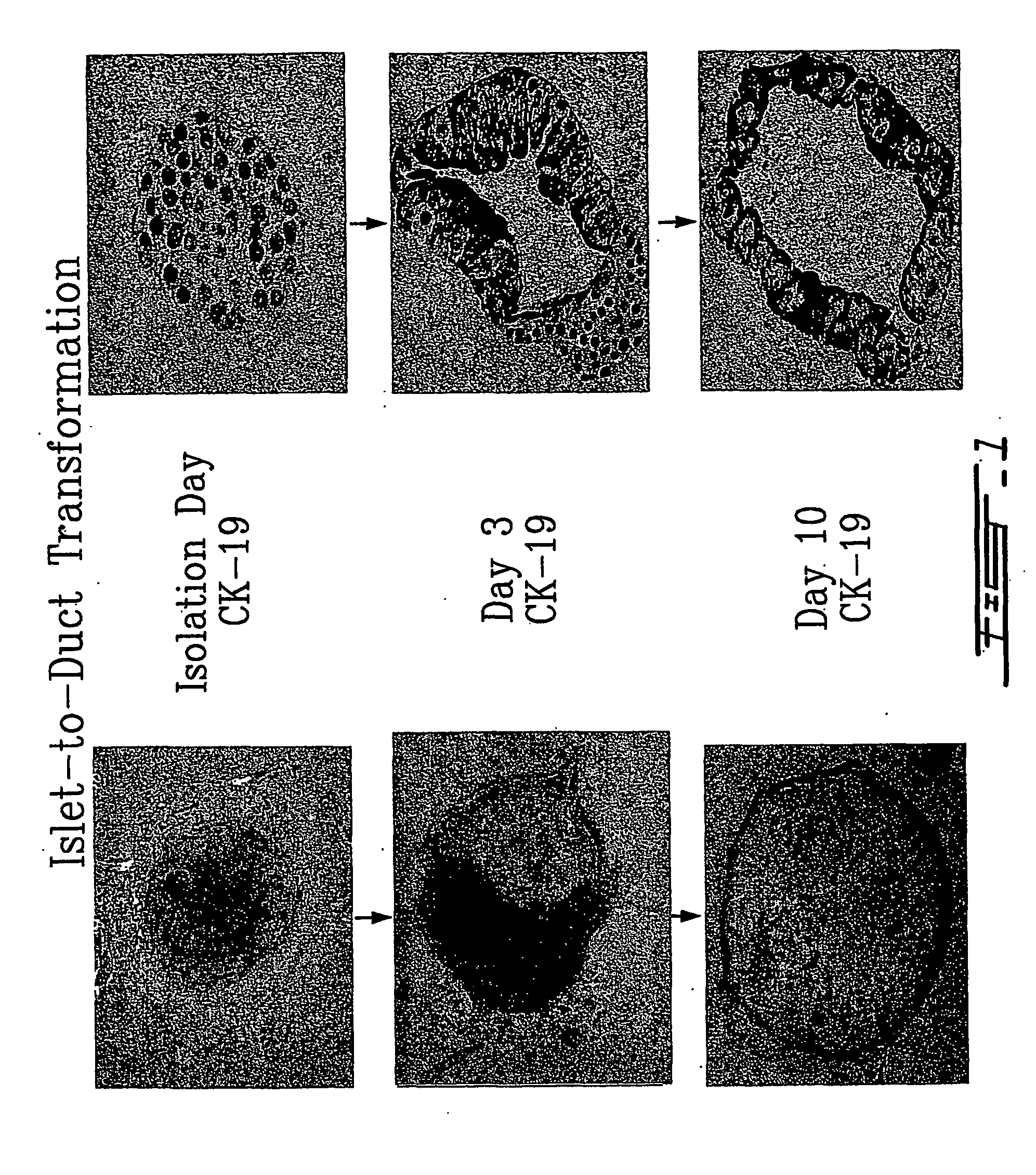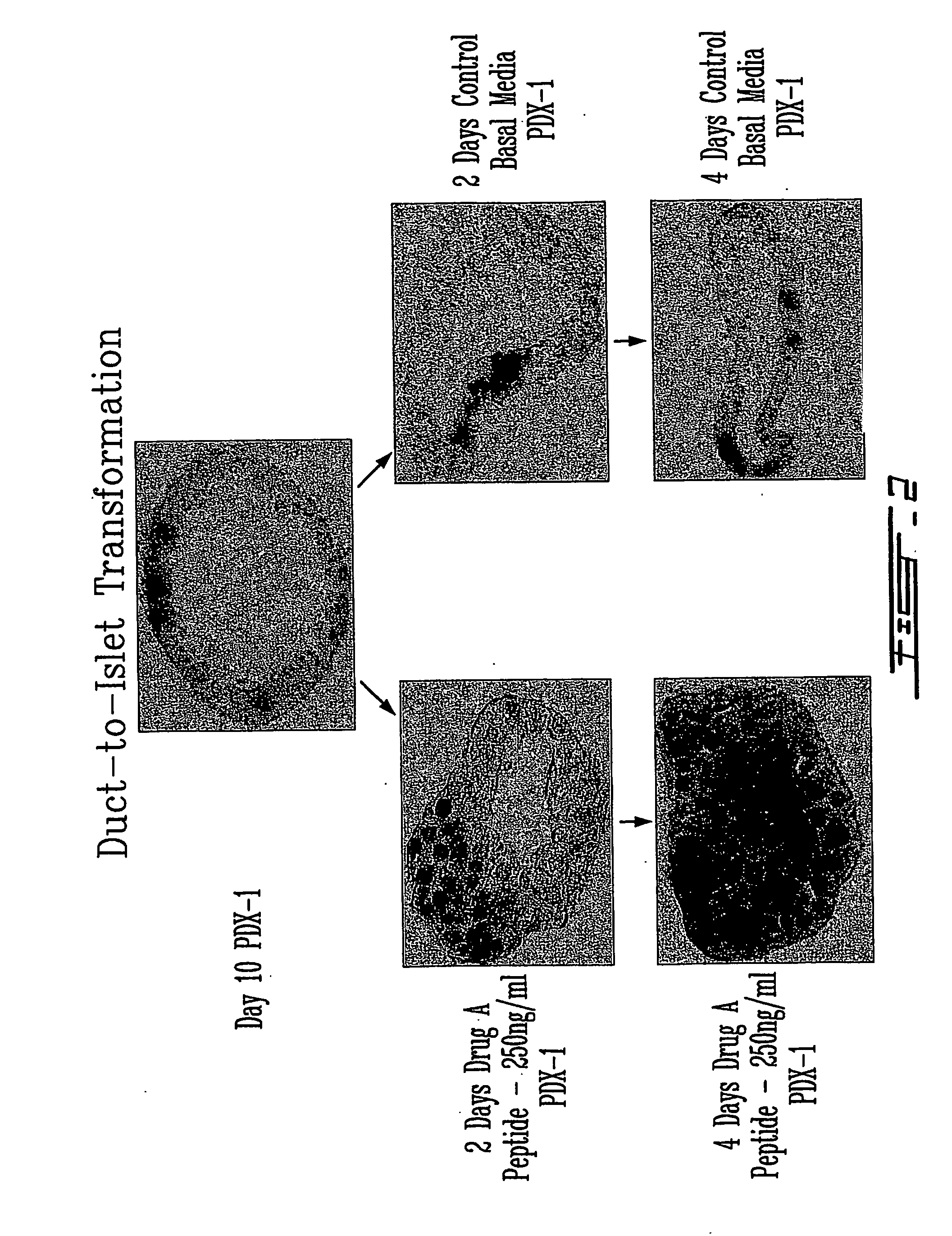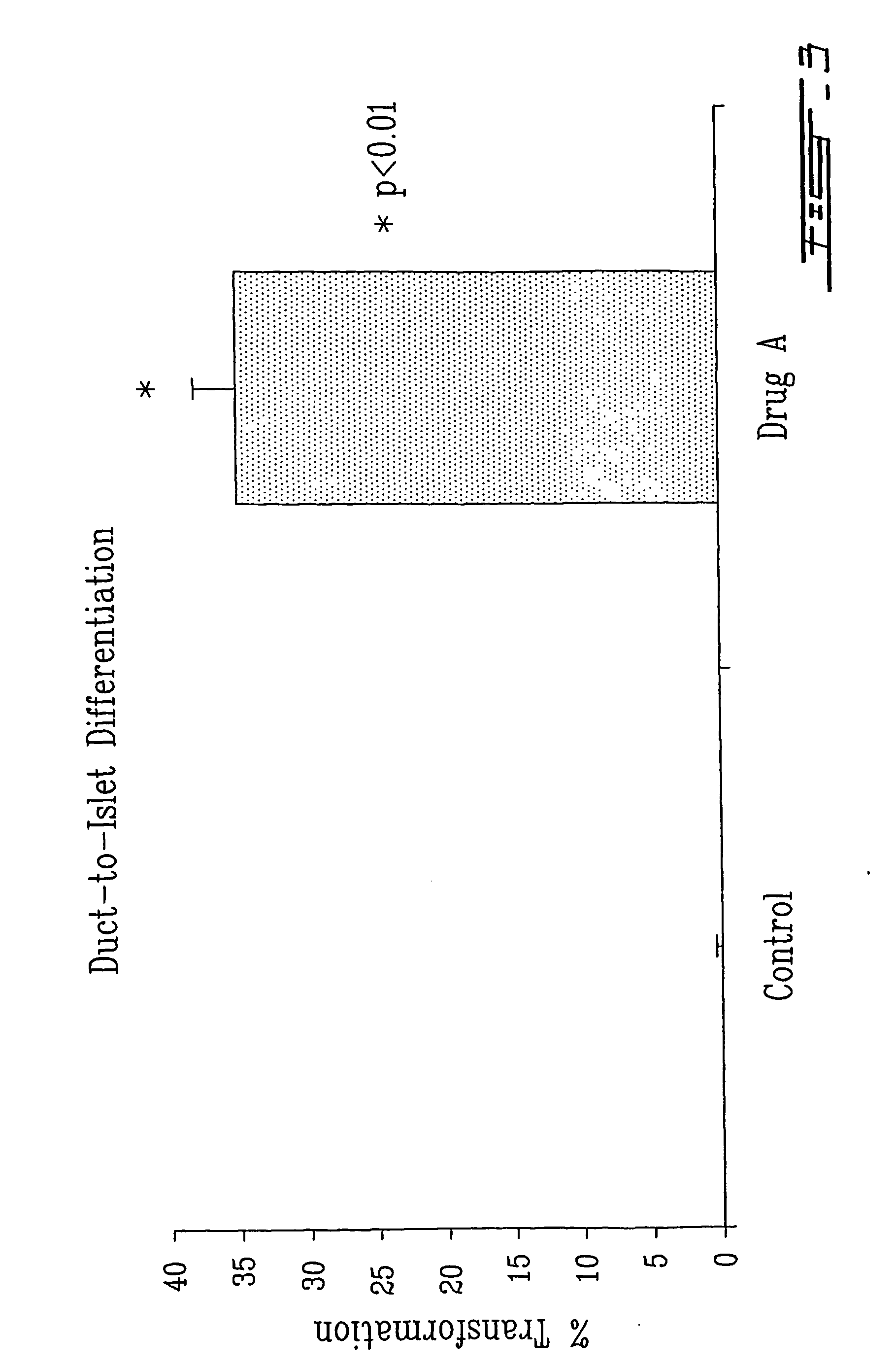In vitro platform for screening agents inducing islet cell neogenesis
a technology of islet cell neogenesis and screening agent, which is applied in the field of in vitro platforms, can solve the problems of inability to achieve the glucose metabolism of exogenous insulin, the incidence of severe hypoglycemia is three-fold increased, and the glucose control is restricted
- Summary
- Abstract
- Description
- Claims
- Application Information
AI Technical Summary
Benefits of technology
Problems solved by technology
Method used
Image
Examples
example i
Islet Isolation and Purification
[0064] Pancreata from six mongrel dogs of both sexes (body weight 25-30 kg) were resected under general anesthesia in accordance with Canadian Council for Animal Care guidelines (Wang R N, Rosenberg L (1999) J Endocrology 163 181-190). Prior to removal, the pancreatic ducts were cannulated to permit intraductal infusion with Liberase CI® (1.25 mg / ml) (Boehringer Mannheim, Indianapolis, Ind., USA) according to established protocols (Horaguchi A, Merrell R C (1981) Diabetes 30 455-461; Ricordi C (1992) Pancreatic islet cell transplantation. pp 99-112. Ed Ricordi C. Austin: R. G. Landes Co.). Purification was achieved by density gradient separation in a three-step EuroFicoll gradient using a COBE 2991 Cell Processor (COBE BCT, Denver, Colo., USA) (London NJM et al. (1992) Pancreatic islet cell transplantation. pp 113-123. Ed Ricordi C. Austin: R. G. Landes Co.). The final preparation consisted of 95% dithizone-positive structures with diameters ranging ...
example ii
Screening compounds for Islet Neogenesis potency
[0065] Adult islets were isolated, where each preparation used was over 95% pure, and transformed 100% of these islets into duct epithelial structures under defined culture conditions. The panel on the left of FIG. 1 is from an inverted microscope and follows a typical islet as it transforms over a 10-day period to a duct epithelial structure. During this transformation process, the appearance, as shown on the panel on the right of FIG. 1, of the duct epithelial cell marker CK-19 in every cell of the new ductal structures formed indicates a phenotypic switch from islet to duct. Also, there was a complete loss of islet cell hormone expression in all of these duct cells.
[0066] This islet-to-duct model was then used to study the effects of Drug A on this homogeneous population of duct epithelial cells. As you can see from the panels on the left of FIG. 2, after 4 days of Drug A treatment at a concentration 250 ng / ml, complete islet form...
PUM
| Property | Measurement | Unit |
|---|---|---|
| body weight | aaaaa | aaaaa |
| diameters | aaaaa | aaaaa |
| concentration | aaaaa | aaaaa |
Abstract
Description
Claims
Application Information
 Login to View More
Login to View More - R&D
- Intellectual Property
- Life Sciences
- Materials
- Tech Scout
- Unparalleled Data Quality
- Higher Quality Content
- 60% Fewer Hallucinations
Browse by: Latest US Patents, China's latest patents, Technical Efficacy Thesaurus, Application Domain, Technology Topic, Popular Technical Reports.
© 2025 PatSnap. All rights reserved.Legal|Privacy policy|Modern Slavery Act Transparency Statement|Sitemap|About US| Contact US: help@patsnap.com



